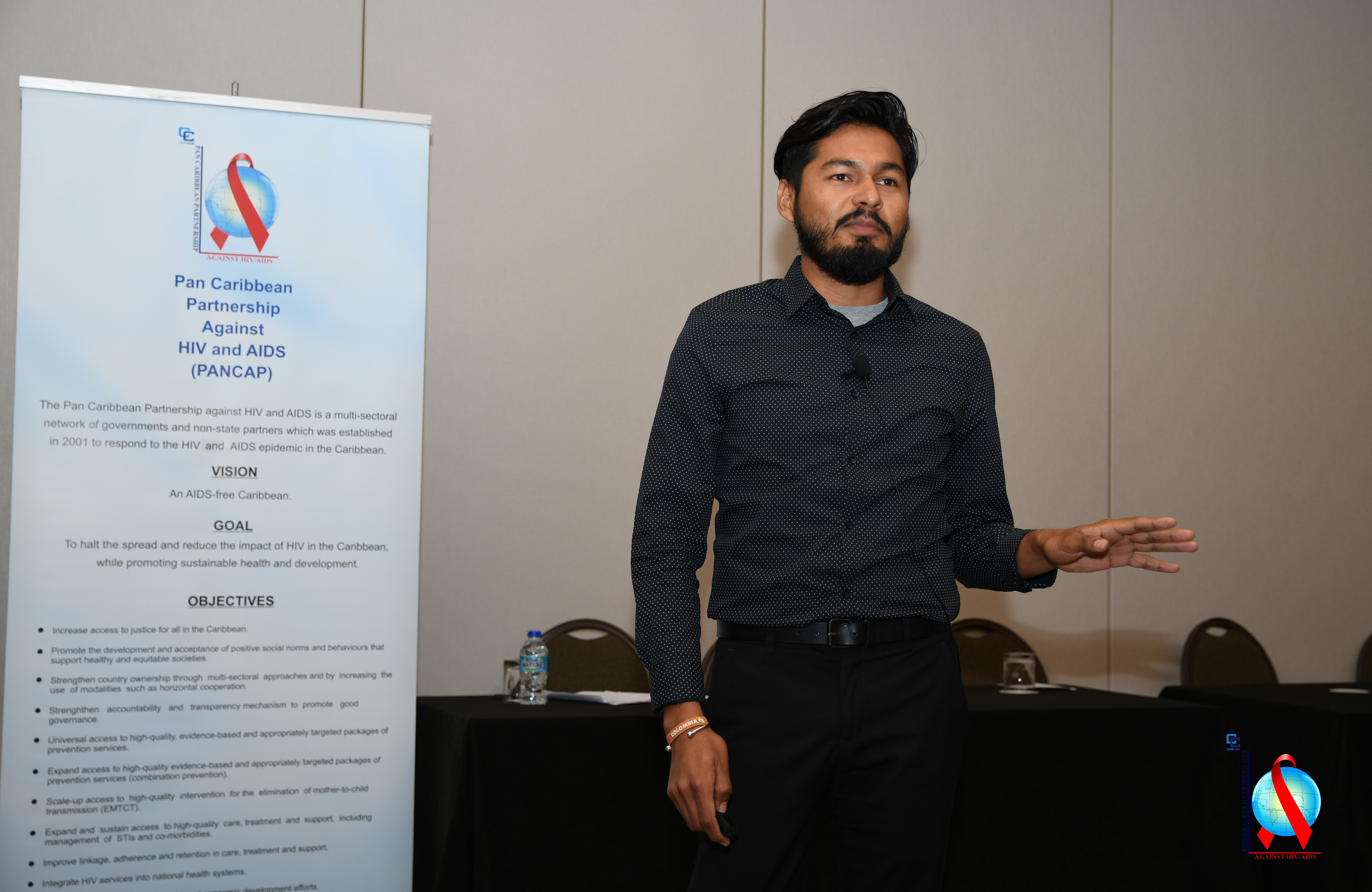
Challenges Implementing Caribbean Regional Youth Advocacy Framework (CRYAF) for Discussion at Second Meeting of Youth Leaders: Sexual and Reproductive Health And HIV and AIDSPANCAP Youth Advocacy Steering Committee to Build Capacity of Youths in High-Level Advocacy
Friday, 11 May, 2018 (PANCAP Coordinating Unit, CARICOM Secretariat): The Pan-Caribbean Partnership against HIV and AIDS (PANCAP), the mechanism that provides a structured and unified approach to the Caribbean’s response to the HIV epidemic, will host the Second Meeting of Youth Leaders on Sexual and Reproductive Health and HIV and AIDS on 18 -19 May 2018 in Port-of-Spain, Republic of Trinidad and Tobago.
The meeting comes approximately one year after the First Meeting of Youth Leaders and two years ahead of the 2020 deadline for reaching the 90-90-90 targets—90% of people living with HIV diagnosed, 90% of diagnosed people on treatment and 90% of those on treatment virally suppressed.
The overarching aim of the meeting is to foster increased understanding of the challenges and opportunities of youth leaders in order to develop advocacy supporting tools and materials for youths to advocate at the highest-level for the end of AIDS by 2030.
Over 40 participants are scheduled to attend consisting of CARICOM Youth Ambassadors (CYAs), youth leaders from Key Populations, select parliamentarians and representatives of the Caribbean Family Planning Affiliation (CFPA) and the Caribbean Vulnerable Communities Coalition (CVC-COIN). Over 15 Caribbean territories will be represented.
The meeting is organized by the PANCAP Youth Advocacy Steering Committee with support from the PANCAP Coordinating Unit. According to Mr Kevin Mendez, Chair, PANCAP Youth Advocacy Steering Committee, the meeting will provide youth leaders with the opportunity for in-depth discussion on the achievements and challenges confronted by youth leaders in addressing the three priority areas identified in the Caribbean Regional Youth Advocacy Framework (CRYAF) on Sexual and Reproductive Health and Rights with the aim of developing practical advocacy tools and techniques that can be adapted in each Caribbean territory.
Through the CRYAF, PANCAP’s intended objective is to further the remit of the Caribbean Regional Strategic Framework (CRSF) on HIV and AIDS under Strategic Priority Areas (1): An Enabling Environment and (3) Prevention as well as to support the PANCAP Justice for All Roadmap.
The Chair further explained that the forum will serve to identify regional and international mechanisms that can be used as best practice models for the achievement of priority objectives, provide the opportunity to exercise advocacy techniques with parliamentarians, Civil Society Organisation representatives and Caribbean Youth Ambassadors (CYAs) through a panel discussion addressing sexual and reproductive health issues and concerns identified by youth leaders.
He highlighted that the meeting will enable the adaptation of a standardized data collecting and reporting tool used by youth leaders in their respective countries. This will better inform PANCAP of opportunities to support innovative approaches to mobilize regional youth leaders to engage in high-level advocacy, as well as further develop advocacy tools and materials to review and address policies, practices and laws that affect young people’s vulnerabilities to HIV.
“The intention is to provide a forum for in-depth discussion on achievements and challenges of youth leaders advocating for the implementation of the CRYAF on Sexual and Reproductive Health and Rights priority objectives in their respective countries,” stated Mr. Mendez.
Further, youth leaders will be engaged in identifying and analyzing regional and international mechanisms for use as best practice models addressing barriers that impede access to sexual health services by youth.
The forum will also provide an opportunity for practical high-level advocacy involving parliamentarians, Civil Society Organization and CYAP representatives.
– ENDS –
What is PANCAP?
PANCAP is a Caribbean regional partnership of governments, regional civil society organisations, regional institutions and organisations, bilateral and multilateral agencies and contributing donor partners which was established on 14 February 2001. PANCAP provides a structured and unified approach to the Caribbean’s response to the HIV epidemic, coordinates the response through the Caribbean Regional Strategic Framework on HIV and AIDS to maximise efficient use of resources and increase impact, mobilises resources and build capacity of partners.
What are the Joint United Nations Programme on HIV and AIDS (UNAIDS) 90-90-90 Targets?
• By 2020, 90% of all people living with HIV will know their HIV status.
• By 2020, 90% of all people with diagnosed HIV infection will receive sustained antiretroviral therapy.
• By 2020, 90% of all people receiving antiretroviral therapy will have viral suppression.
Contact:
Timothy Austin
Communications Specialist
PANCAP Coordinating Unit
CARICOM Secretariat
Turkeyen, Greater Georgetown, Guyana
Email: taustin.consultant@caricom.org
Tel: (592) 222-0001-75, Ext. 3409 | Visit www.PANCAP.org
WHAT IS PANCAP?
PANCAP is a Caribbean regional partnership of governments, regional civil society organisations, regional institutions and organisations, bilateral and multilateral agencies and contributing donor partners established on 14 February 2001. PANCAP provides a structured and unified approach to the Caribbean’s response to the HIV epidemic, and coordinates the response through the Caribbean Regional Strategic Framework on HIV and AIDS to maximise efficient use of resources and increase impact, mobilise resources and build the capacity of partners.
What are the Global AIDS Strategy 2021–2026 targets and commitments?
If targets and commitments in the strategy are achieved:
- The number of people who newly acquire HIV will decrease from 1.7 million in 2019 to less than 370 000 by 2025
- The number of people dying from AIDS-related illnesses will decrease from 690 000 in 2019 to less than 250 000 in 2025.
- The goal of eliminating new HIV infections among children will see the number of new HIV infections drop from 150,000 in 2019 to less than 22,000 in 2025.
What are the 95-95-95 Targets for ending AIDS?
- 95% of People Living with HIV know their HIV status;
- 95% of people who know their status on treatment; and
- 95% of people on treatment with suppressed viral loads.
HELPFUL LINKS:
Global AIDS Strategy 2021–2026, End Inequalities, End AIDS
https://pancap.org/pancap-documents/global-aids-strategy-2021-2026-end-inequalities-end-aids/
Caribbean Regional Strategic Framework on HIV and AIDS (CRSF) 2019-2025
https://pancap.org/pancap-documents/caribbean-regional-strategic-framework-2019-2025/
